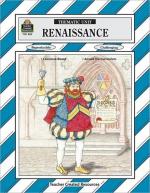|
This section contains 701 words (approx. 3 pages at 300 words per page) |

|
Localism. The limit of daily travel and thus the limits of sending information in preindustrial society was roughly thirty miles per day. Someone from more than thirty miles away was therefore foreign to an area. As a result it is better to think of Europe not as one entitity but rather as a complex patchwork of small local units. Localism is evident in the variations in customs, coinage, and dialects. The oral culture of late-medieval Europe consisted of a wide range of diverse dialects. The rise of printing in the fifteenth century eventually created a standard written form of most languages. The standard form was usually the result of a small group of popular writers who chanced to be from the same region, such as Dante, Petrarch, and Boccacio from Tuscany. By 1600 most languages had a "high," or written, version that the educated elite began to...
|
This section contains 701 words (approx. 3 pages at 300 words per page) |

|




